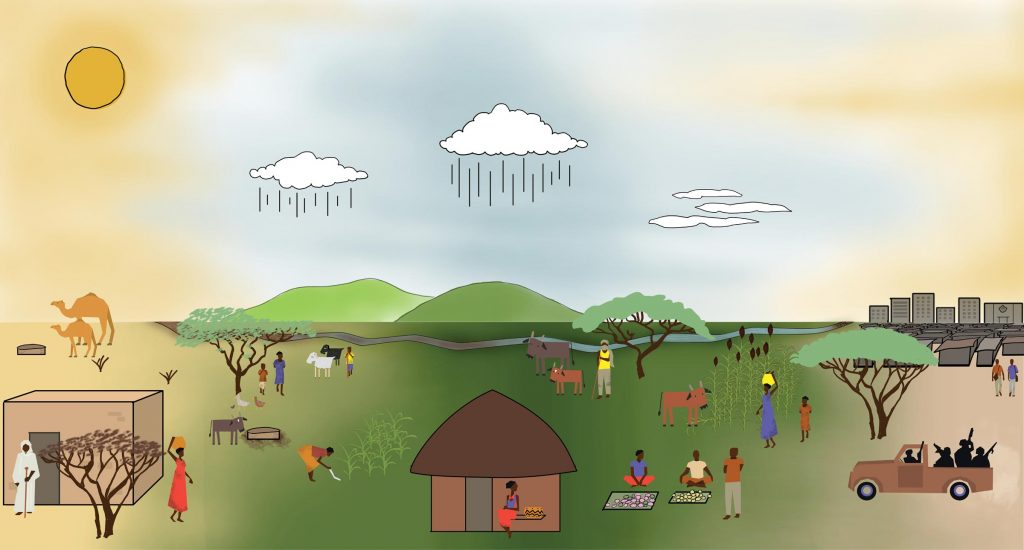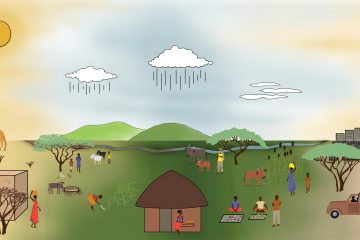Technical Series on the Conceptual Framework for Addressing Acute Malnutrition in Africa’s Drylands

Childhood wasting is an increasing global public health problem and studies have shown that emergency rates of global acute malnutrition persist in the longer-term in some dryland contexts—even in the absence of an obvious emergency and despite ongoing packages of essential nutrition interventions. A range of experts and practitioners increasingly recognize the problem of persistent global acute malnutrition, or P-GAM[1], and the need more effectively prevent malnutrition.
FAO and Tufts Mind the Gap research[2] demonstrated significant relationships between climate, environment, and conflict with P-GAM in three countries: Sudan, South Sudan, and Chad. It revealed two distinct seasonal peaks of acute malnutrition: a larger peak at the start of the rainy season and smaller peak pre-harvest. This new evidence contradicts long held assumptions about the seasonal peak of acute malnutrition coinciding with the late rainy season just before the harvest, a time known as the hunger gap, although there have been some independent references to P-GAM during the late dry season and early rains.
Based on this and previous research, Tufts recently produced a report, Nutrition in Africa’s drylands: a conceptual framework for addressing acute malnutrition, that proposes an adapted framework specific to Africa’s drylands. The adapted framework preserves the immediate and underlying drivers of acute malnutrition and recognizes the synergism between them. It also reconceptualizes the basic, more systemic, drivers of acute malnutrition to include three interlinked areas: environment and seasonality; systems and institutions; and livelihood systems.
Additionally, FAO, UNHCR, UNICEF, WFP, and WHO recently developed the Global Action Plan on Wasting (GAP). This plan calls for a policy shift to increase efforts to prevent all forms of malnutrition and achieve the Sustainable Development Goals (SDG) targets on wasting and under nutrition.
[1] Young, Helen, and Anastasia Marshak. 2018. “Persistent Global Acute Malnutrition. A briefing paper on the scope of the problem, its drivers and recommendations for policy, practice and research.” In A Feinstein International Center Brief. USA: Feinstein International Center, Tufts University.
[2] Young, Helen, and Anastasia Marshak. Twin Peaks: The Seasonality of Acute Malnutrition, Conflict and Environmental Factors in Chad, the Sudan and South Sudan. Food and Agriculture Organization of the United Nations (Rome: 2019).

0 Comments